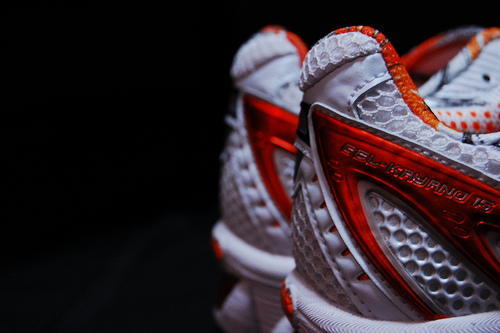By Sasha Moedt (The Cascade) – Email
Print Edition: December 6, 2011
The last two months were filled with midterms, those research papers and final exams. We all made priorities. You could get maybe a couple of hours here and there to workout, but they become less and less. There is a mindset out there—a myth—that if you don’t workout consistently, then there is no reason to do it at all. So once balancing school and work gets too much, students tend to just cut physical health out of the schedule completely.
Maybe students are like weekend warriors, except with semesters instead of weeks – we do all of our working out during the time off between terms. If so, the time to get back into shape is soon approaching; we can once again pick up the things that weren’t quite priorities this semester. Now we can get back to the gym, the running trail or the free weights in our basements.
Before starting, make sure your gear—namely, the running shoes—are decent. Crummy shoes affect your whole body. If they don’t provide cushioning and fit your foot, you’ll have the stress on your joints, which can cause injuries to your knees, ankles, shins and hips. Your body will break down before the shoes do, so don’t wait for that as a sign to buy new ones.
When you start up working out again, there is an urge to quickly, in one workout, purge your body of all that slack time. By now you know there’s a limited time of enthusiastic inspiration to get back into shape, before it fades to apathy again. But unfortunately, you can’t purge yourself in one concentrated, enthusiastic burst of energy.
You have to pace yourself and take it slow. Waking up stiff and sore the next morning is inevitable, sure, but don’t go so hard you can’t even get out of bed. Start with lighter weights and less time that you last did. This will reduce chances of injuring your body and ego. It’s a terrible thing to discover that you can only run five minutes before you start coughing up blood. Don’t push yourself to the limits the first time to see how “out of shape” you’ve become, or to make up for lost hours. If you are leaving the gym exhausted, sore and discouraged, the chance of going back for another workout is far slimmer.
Stretching out and giving time for your body to recover is really important. Incorporate stretching into your workout. Stretching before and after a workout will reduce muscle soreness later on; additionally, it will lessen the chance of injury that you’re prone to develop when you start working out again. Meanwhile, give yourself recovery time in between workouts. If you are working out everyday, make sure to alternate muscles.
To say “set goals” and “make a plan” sounds sickeningly proactive – like something those chirpy gym people that nobody likes would say. But there are ways to use those techniques secretly, even tricking yourself. Just thinking about what you are going to be doing during your workout is a good idea. Arriving aimlessly at the gym ends up in a long, meandering workout that isn’t effective. Everyone starts out with vague goals in mind – weight loss, flexibility, muscle development. Just to have something concrete set out in your mind is enough: where you’re headed and how you’ll get there.
Working out after being stagnant for a semester should be a rebuilding period for strength and endurance. It’s mostly about avoiding injury and discouragement so you can keep at it. Get your muscles and joints used to those motions again. Ease into a consistent routine and try to make it a habit. We can only hope that it will stick for next semester!


